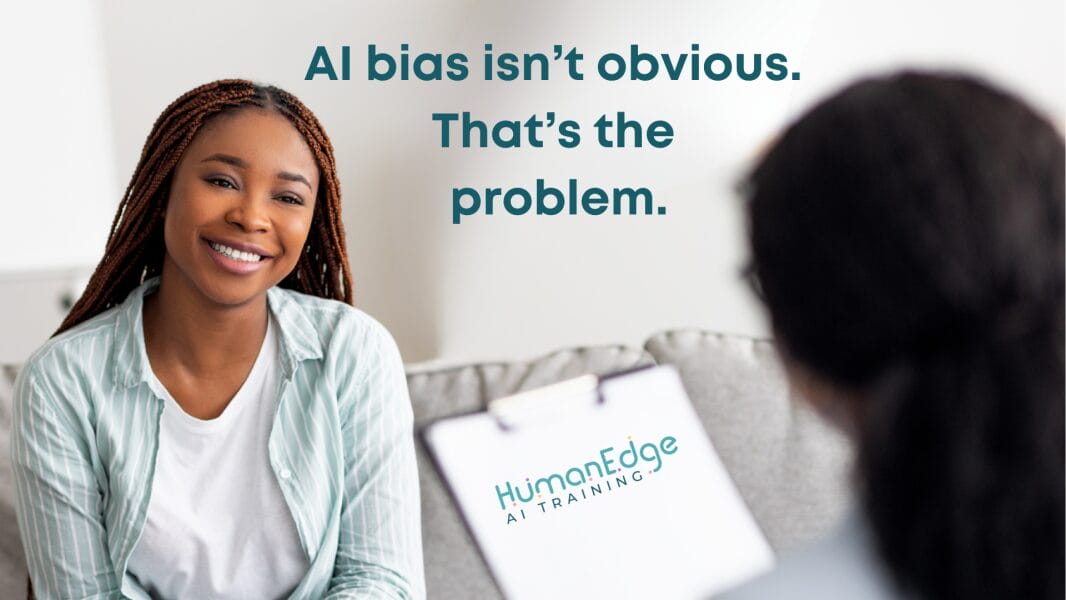With AI creeping into everything from customer service to content creation, businesses face a critical question: Are we using AI to enhance human skills – or are we letting it replace what makes us unique?
A paintbrush in inexperienced hands won’t create a masterpiece. It’s the artist’s skill, vision, and experience that brings a blank canvas to life.
AI works the same way. It can speed up processes, generate content, and analyse data, but without human creativity, judgment, and connection, it’s just producing words and numbers without meaning.
This is where Human-First AI comes in. I don’t want you to resist technology, but I DO want you to ensure AI works for you, not instead of you.
AI-First vs Human-First – Who’s in control?
Some businesses are going all-in on an AI-First approach – where AI sits at the core of decision-making, innovation, and even customer interactions. Every process is built around AI, with technology taking the lead and humans adapting to fit around it. It’s efficient, sure, but often comes at the cost of authenticity, creativity, and trust.
Then there’s Human-First AI – where AI plays a supporting role rather than running the show. This approach uses AI to enhance human skills, not replace them. AI streamlines tasks, generates ideas, and speeds up processes, but people stay in control of strategy, decision-making, and brand voice. I’m much more aligned with this approach.
I know that an AI-First mindset might seem tempting because it promises speed, automation, and scale. But when businesses lean too heavily on AI, they risk becoming generic, robotic, and disconnected from their customers. A Human-First approach ensures your brand stays distinctive, your messaging stays authentic, and your audience feels truly connected.
We must maintain a sense of human connection
An AI-First approach might optimise efficiency, but it often strips away something essential – real human connection. AI can automate workflows and generate content at scale, but it doesn’t understand emotions, build relationships, or create trust.
While customers want quick responses, feeling heard is usually even more important. They’re noticing when a brand’s voice starts sounding robotic or when their interactions feel transactional rather than personal. I personally get extremely frustrated when this happens to me. And it usually leads to the disintegration of brand trust. AI can assist, but it’s humans who bring warmth, nuance, and creativity to the conversation.
That’s why a Human-First AI approach is about using AI properly. It ensures that while AI handles the heavy lifting, humans stay in control of creativity, strategy, and relationships. The businesses that get this balance right – and use AI to enhance human connection rather than replace it – will be the ones that truly stand out.
How to implement Human-First AI in your business
Understanding the why behind Human-First AI is one thing, but putting it into action is another. It’s easy to assume that using AI responsibly just means “don’t overdo it.” But in reality, it takes intentionality.
So, how do you make AI an asset for your business, rather than a replacement of your team?
- Use AI to free up time for human connection – Let AI handle the repetitive admin work, but keep people at the forefront where relationships and trust matter most. That includes customer service, content creation, and decision-making.
- Train AI to match your brand’s voice, but maintain human oversight – AI-generated content should sound like you and your organisation, not a generic bot. The best results come when AI is used as a drafting tool, with humans refining, tweaking, and injecting personality. (Like what I’ve done with this article!)
- Be transparent about AI’s role – Customers don’t mind AI assistance. But they don’t like it when brands pretend to be human. If AI is involved, own it and clarify where human input comes in.
- Avoid ‘set and forget’ AI – AI needs constant fine-tuning, especially right now while it’s in its infancy. Keep reviewing and adjusting how it’s being used in your business to ensure it remains an enhancement, not a crutch.
The future belongs to Human-First AI
AI is here to stay – there’s no question about that. But the businesses that will truly thrive are the ones using AI strategically, ensuring it enhances human intelligence, creativity, and relationships rather than replacing them.
Prioritising a Human-First AI approach means staying in control. It’s about making smarter, more intentional choices with AI, so your brand remains authentic, your messaging stays unique, and your customers continue to feel valued. Businesses that strike this balance will stand out while others risk blending into the AI-generated noise.
Want to learn how to put Human-First AI into action?
I’m running a live masterclass this Thursday where I’ll break this all down in a practical, no-fluff session:
👉 #Keepithuman – A Practical Guide to Human-First AI
📅 Thursday 13 February 2025 @ 12pm AEDT
💻 Live, online session (A replay will be available to those that register)
🎟️ Sign up here
Expect actionable strategies, real-world examples, and insights to help you make AI work for your business without losing the human touch that makes it special. Hope to see you there!




